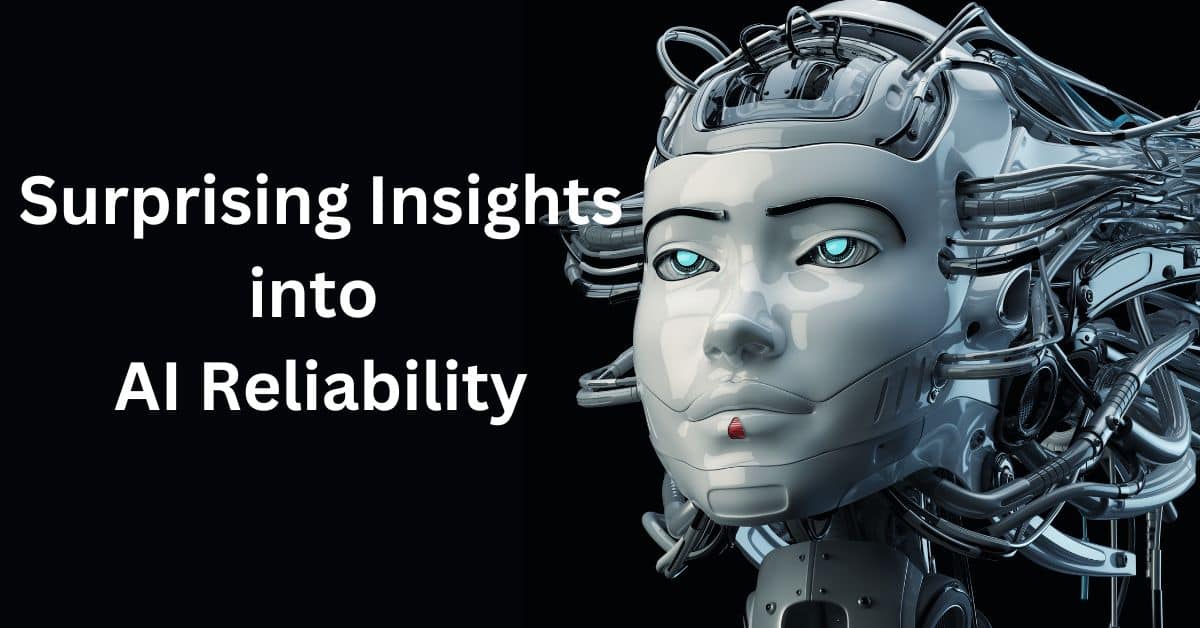GPT Model Trust Study Reveals Surprising Insights into AI Reliability

As technological advancements continue to shape industries and innovation, a significant portion of the global population is willing to harness the potential of emerging technologies for sensitive domains like financial planning and medical guidance.
In a global poll, more than half of the respondents expressed their readiness to embrace emerging technologies for critical domains such as financial planning and medical guidance. This enthusiasm, however, is accompanied by apprehensions concerning the susceptibility of these technologies to issues like hallucinations, disinformation, and bias.
The Rise of Large Language Models (LLMs)
Large language models (LLMs) such as GPT-3.5 and GPT-4 have demonstrated remarkable advancements across various sectors. From chatbots to medical diagnostics, these models have showcased their versatility. However, their increasing prevalence has also given rise to doubts regarding their reliability.
A Comprehensive Assessment of Trustworthiness
Amidst these debates, a group of academics has embarked on an ambitious evaluation of GPT models’ trustworthiness. Their analysis hones in on eight key dimensions of trustworthiness, employing carefully crafted scenarios, metrics, and datasets to measure LLM performance. This initiative seeks to provide a nuanced understanding of the capabilities and limitations of GPT models, with a special focus on the newer iterations, GPT-3.5 and GPT-4.
| Aspect of Analysis | Details |
|---|---|
| Introduction |
– More than 50% willing to use AI despite concerns in critical areas.
– Generative AI introduces hallucinations, misinformation, and biases. |
| Trustworthiness Study |
– Study led by Koyejo and Li on GPT-3.5 and GPT-4.
– Evaluated from trust angles: toxicity, bias, robustness, privacy, ethics, fairness, etc. – Highlights toxicity, bias, privacy issues in AI outputs. |
| Capabilities and Limits |
– AI models show promise in natural conversations.
– Current AI limitations compared to asking a goldfish to drive. – Potential for growth and development in AI’s capabilities. |
| Adversarial Prompts |
– Hidden toxic responses emerge under adversarial prompts.
– Models’ behavior challenging to control with specific inputs. |
| Bias and Stereotypes |
– GPT-4 improves in avoiding direct stereotypes.
– Latent biases and inclinations remain. |
| Privacy Concerns |
– Varying sensitivity towards privacy; cautious with certain data.
– Models’ inconsistency in handling confidentiality. |
| Fairness in Predictions |
– Models’ fairness analyzed through income predictions.
– Gender and ethnicity still lead to biased conclusions. |
| Trust and Skepticism |
– Approach AI with optimism and skepticism.
– AI models not infallible; skepticism advised. |
Evolution and Impact of GPT-3.5 and GPT-4
GPT-3.5 and GPT-4 represent the latest evolution in LLMs. These iterations have not only scaled in terms of efficiency but have also paved the way for dynamic human-AI interactions. However, despite being improvements over their predecessors, GPT-4, in particular, demands a larger financial investment in training due to its extended parameter set.
Navigating the Reliability Assessment
To ensure that LLMs generate outputs aligned with human ideals, GPT-3.5 and GPT-4 leverage Reinforcement Learning from Human Feedback (RLHF). This mechanism serves as a critical tool in evaluating these models’ reliability across dimensions such as toxicity, bias, robustness, privacy, ethics, and fairness.
Comparing GPT-4 and GPT-3.5
The comprehensive evaluation of GPT-3.5 and GPT-4 highlights a noteworthy trend: GPT-4 consistently outperforms GPT-3.5 across various dimensions. However, this advancement comes with a caveat. GPT-4’s enhanced ability to follow instructions closely also raises concerns about its susceptibility to manipulation, especially in the face of adversarial demonstrations or misleading prompts.
Charting the Path Forward: Safeguarding Reliability
The evaluation process has identified specific characteristics of input scenarios that impact the reliability of these models. This insight has led to the identification of multiple research avenues aimed at protecting LLMs from vulnerabilities. Among these, interactive discussions, susceptibility assessments against diverse adversaries, and evaluating credibility in specific contexts are crucial steps.
Trending News
A Journey Toward Trustworthy AI
As the LLM landscape evolves, ensuring trustworthiness remains a paramount challenge. Strengthening LLM reliability involves incorporating reasoning analysis, guarding against manipulation, and aligning evaluations with stringent guidelines. The path ahead involves breaking down complex issues into manageable components to secure the credibility and dependability of these potent AI tools.
Conclusion: Paving the Way for Trustworthy AI
The evaluation of LLM trustworthiness emerges as a cornerstone in the development of technology-driven interactions. While challenges persist, this thorough analysis lays the groundwork for collaborative efforts to reinforce LLMs against potential vulnerabilities. This pursuit not only ensures a more secure and dependable AI landscape but also sets a precedent for ethical and robust technological advancements in the era of emerging technologies.

